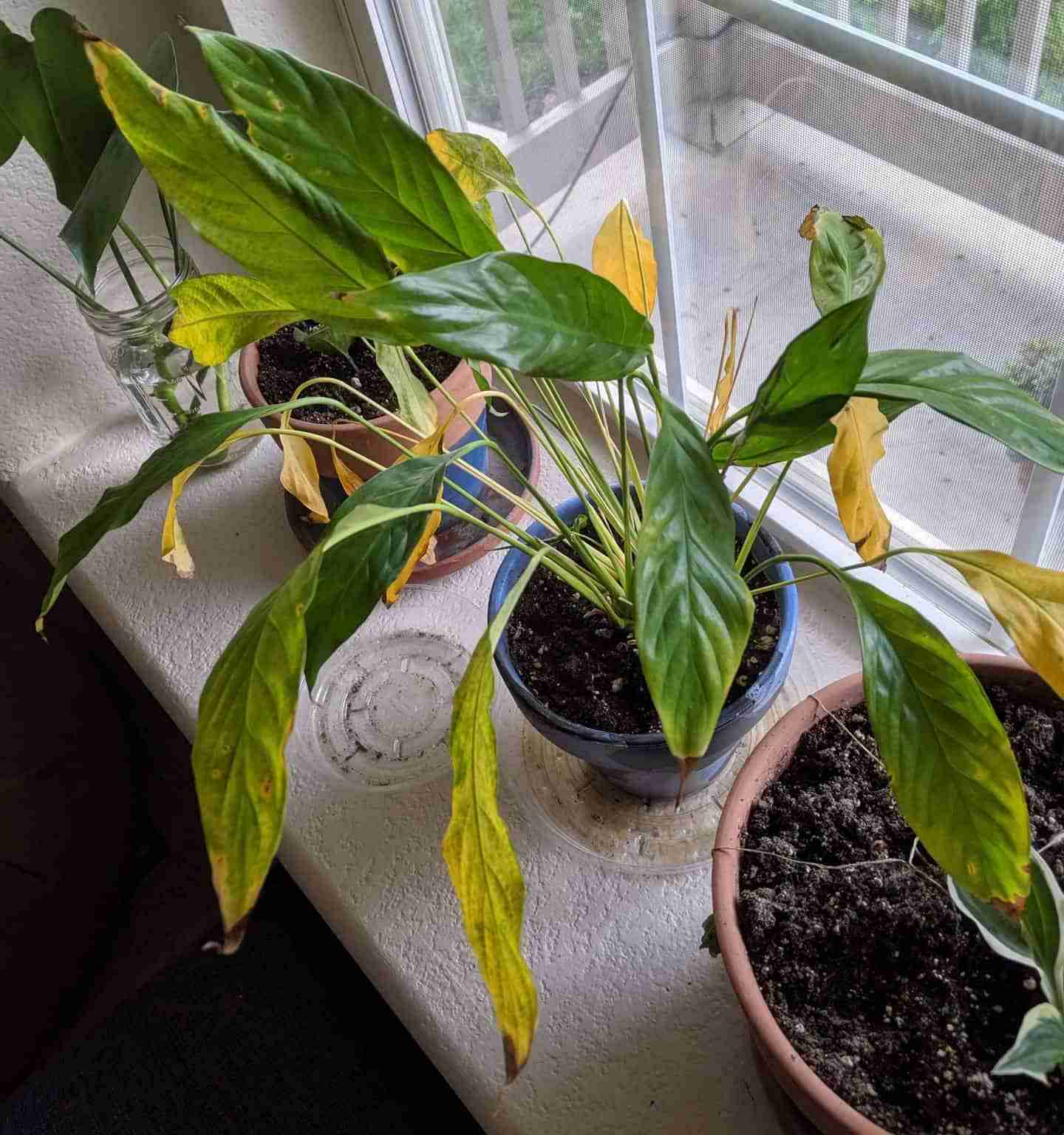
Source www.perfectpeacelily.com
Welcome to our comprehensive guide on the importance of water for peace lilies. As avid plant lovers, we understand the significance of providing the perfect care for your green companions. In this article, we will delve into the world of peace lilies and their specific water requirements. Whether you’re a seasoned plant parent or just starting with your indoor garden, this guide will help you achieve lush and vibrant peace lilies in no time!
Peace lilies (Spathiphyllum) are popular houseplants known for their stunning dark green foliage and elegant white blooms. To keep these plants happy and flourishing, it’s essential to understand their specific water needs. In this article, we’ll explore the ideal watering techniques, common mistakes to avoid, and other helpful tips to ensure your peace lilies thrive.
Understanding the Watering Basics
Watering Frequency: Striking the Right Balance
One of the most critical factors in water care for peace lilies is finding the perfect balance. Over-watering can lead to root rot, while under-watering can cause drought stress. Finding the sweet spot involves understanding the plant’s natural habitat and adjusting watering frequency accordingly.
Peace lilies are native to tropical regions where they grow in the understory of rainforests. In their natural environment, they receive ample moisture but also experience brief periods of drying out. It’s crucial to replicate these conditions to ensure optimal growth.
Water Quality: The Importance of Clean and Filtered Water
Another vital aspect of peace lily water care is the quality of the water you use. Just like humans, peace lilies are sensitive to chlorine and other chemicals that may be present in tap water. Using filtered water, or allowing tap water to sit overnight to dissipate the chlorine, can help prevent any adverse effects on your plants.
It’s also important to note that peace lilies are susceptible to fluoride toxicity. If your tap water has a high fluoride content, consider using distilled or rainwater instead. This will ensure your peace lilies stay healthy and vibrant for years to come.
Watering Techniques: The Right Way to Hydrate Your Peace Lilies
When it comes to watering techniques, peace lilies prefer a thorough drenching followed by allowing the soil to slightly dry out before the next watering. This mimics their natural rainforest habitat, providing adequate moisture while preventing root suffocation.
The best approach is to water your peace lily until you see water starting to escape through the drainage holes at the bottom of the pot. Allow the excess water to drain completely before placing the plant back in its desired location. This ensures that the roots have access to water without being waterlogged.
A Breakdown of Peace Lily Watering Needs
| Watering Aspect | Watering Frequency |
|---|---|
| Initial Watering | Thoroughly saturate the soil until water escapes through drainage holes. Allow the top inch of soil to dry before the next watering. |
| Subsequent Watering | Water when the top inch of soil feels dry to the touch. |
| Seasonal Variations | Adjust watering frequency during winter months when peace lilies require less water. |
| Humidity Considerations | Mist the leaves occasionally to increase humidity, but avoid excessive moisture on the foliage. |
Frequently Asked Questions
Q: How often should I water my peace lily?
A: The frequency of watering depends on various factors such as humidity, temperature, and pot size. Generally, you should water your peace lily when the top inch of soil feels dry.
Q: Should I use tap water or filtered water for my peace lilies?
A: Tap water may contain chlorine and other chemicals that can harm peace lilies. It’s best to use filtered water or allow tap water to sit overnight to dissipate the chlorine.
Q: Can I use ice cubes to water my peace lily?
A: While it may seem convenient, using ice cubes to water peace lilies can potentially damage the roots. It’s better to water the plant with room temperature water instead.
Q: How can I increase humidity for my peace lily?
A: Peace lilies appreciate humidity, so misting the leaves occasionally can help. You can also place the plant on a pebble tray filled with water to increase moisture in the surrounding air.
Q: What should I do if my peace lily leaves turn yellow?
A: Yellow leaves can indicate over-watering, under-watering, or other issues. Check the soil moisture and adjust your watering accordingly. Prune any yellow leaves to promote new growth.
In Conclusion
Now that you’re equipped with the knowledge of proper peace lily watering, you can confidently care for these beautiful plants. Remember to strike the right balance between hydration and drying out, use clean and filtered water, and adjust watering frequency to seasonal changes. By providing your peace lilies with optimal water care, you can enjoy their lush foliage and stunning blooms for years to come.